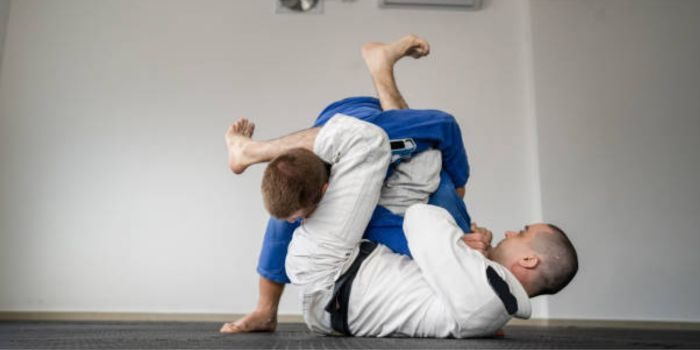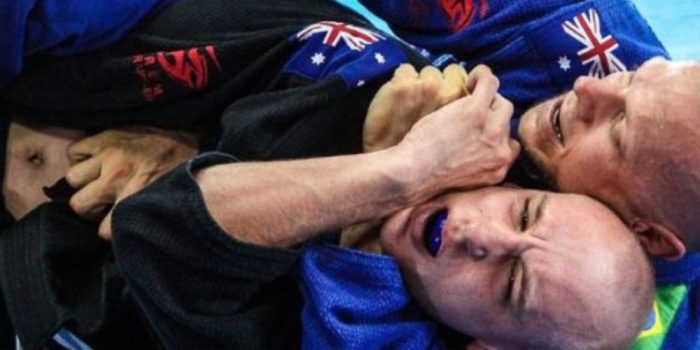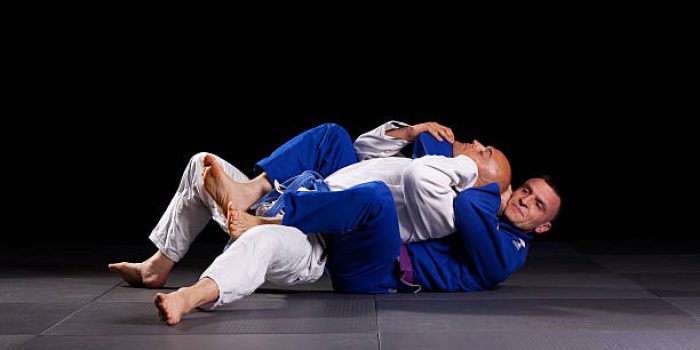If you’re a BJJ enthusiast, you might be captivated by the dynamic combat sport of Combat Jiu Jitsu (CJJ), which merges the traditional grappling of BJJ with the added dimension of striking techniques. This article will explore the world of combat jiu-jitsu, shedding light on its core principles, rules, and strategies to ensure your success in the arena. Whether you’re a seasoned bjj fighter looking to expand your skill set or seeking effective self-defense techniques, mastering this could be a game-changer in your martial arts journey.
Understanding the Basics of BJJ Fight
To fully comprehend the intricacies of Combat Jiu Jitsu, it’s essential to start with the basics of a BJJ match. Jiu jitsu fighting is characterized by its focus on ground combat and the artful application of submission holds. Unlike other martial arts, BJJ experts use leverage and precise technique rather than brute force to dominate their opponents. The pinnacle of success in a BJJ bout is to strategically maneuver an adversary into surrender through expertly executed joint locks or chokeholds.

The Evolution of Combat Jiu Jitsu
This is an advanced evolution of traditional BJJ, developed to meet the practical demands for self-defense in real-world combat situations. While BJJ is renowned for its ground fighting prowess, it traditionally lacks the element of striking. What is Combat Jiu Jitsu? It’s a fusion that incorporates open-handed strikes into BJJ’s grappling framework, creating a more versatile combat jujutsu that prepares fighters for a wider array of combat challenges.
Exploring the Rules and Techniques
Achieving proficiency in this requires a deep dive into its distinct combat jiu-jitsu rules and methodologies. The rules of CJJ allow for open-handed strikes to the head and body when fighters are on the ground, setting it apart from traditional BJJ which prohibits such actions. Striking is off-limits while standing, underscoring the significance of mastering ground control and executing strategic takedowns to make the most of CJJ’s striking opportunities.
In the realm of cjj jiu jitsu, mastering techniques such as takedowns, sweeps, and submissions is crucial. The essence of this lies in seamlessly blending grappling with striking, capturing opportunities to execute strikes while maintaining positional advantage and searching for submission openings. Consistent training and practice under the guidance of an experienced BJJ instructor are key to refining the diverse skill set required to excel in CJJ matches.

Training Tips
To ascend to the pinnacle of this, it’s imperative to commit to a rigorous training regimen. Here are some CJJ training tips designed to advance your skills and prepare you for the intensity of a CJJ tournament, ensuring you’re well-versed in the multifaceted world of BJJ.
1 . Focus on conditioning:
Endurance is pivotal for triumph in CJJ. To elevate your conditioning, combine cardiovascular exercises, strength training, and flexibility routines into your training plan. This holistic approach ensures you’re in top form for CJJ competitions and ready to face the physical demands of both BJJ and MMA.
2 . Spar with striking:
To become accustomed to the striking aspect of CJJ, incorporate specific striking drills and sparring sessions into your training. These practices are instrumental in fine-tuning your timing, enhancing your strike precision, and building resilience to strikes, all while controlling the ground in a CJJ environment, a skill critical in both BJJ and MMA.
3 . Practice realistic scenarios:
For effective preparation for the dynamic encounters of It’s beneficial to simulate real-world combat scenarios during training. Engage in drills that merge striking with ground grappling, equipping you with the versatility and preparedness to confront the challenging dynamics of CJJ matches, a skill that is highly valued in both BJJ and MMA.
Common Mistakes to Avoid
To excel in this, it’s crucial to identify and avoid common mistakes that can hinder your progress. As you delve into your bjj training, keep in mind the specific rules that govern CJJ to prevent any setbacks.
1 . Neglecting striking defense:
When refining your offensive skills in combat jiu-jitsu, achieving a balance with a robust defense is vital. Incorporate the use of bjj headgear in your training, and consistently practice evasive maneuvers and blocking techniques to mitigate the impact of your opponent’s strikes.
2 . Lack of adaptability:
Its dynamic environment calls for a seamless transition between striking and grappling, a staple in both bjj and mma. Avoid the pitfall of focusing too narrowly on one aspect and maintain flexibility to adjust your strategy as the fight evolves.
3 . Underestimating conditioning
Due to the demanding nature of cjj, neglecting physical conditioning can lead to early fatigue, compromising your performance. Embrace a regimen that emphasizes conditioning, essential in both bjj and mma, to endure the intensity of a cjj match.
Preparing for Combat Jiu Jitsu Worlds
For those determined to emerge as champions at prestigious events like the CJJW, thorough preparation is indispensable. Absorb these strategic insights to boost your performance and outmaneuver competitors in the bjj arena.
1 . Study your opponents:
Conduct meticulous research and scrutinize the fighting styles of your potential competitors in combat jiu-jitsu. Understanding their strengths and weaknesses allows you to formulate a bespoke strategy that leverages their vulnerabilities, giving you an edge in bjj contests.
2 . Compete regularly:
Participating in a series of bjj competitions on the journey to the Combat Jiu Jitsu Worlds, is a tactical approach to gain invaluable experience and enhance your confidence. These mma and combat jiu jitsu tournaments are the perfect venues to hone your skills and adjust your fighting strategies for peak performance.
3 . Mental preparation:
Achieving mastery in CJJ, requires an equal measure of mental strength and physical capability. To maintain a calm and focused demeanor in the high-pressure environment of bjj and mma competitions, practice visualization, engage in meditation, and use positive self-talk.

The Benefits of this for Self-Defense
Outside the realm of competition, Combat Jiu Jitsu,, imparts practical skills for self-defense. We will delve into the benefits of incorporating CJJ and bjj techniques into your self-protection strategies:
1 . Ground control
It equips you with the vital bjj skills to control and neutralize an opponent on the ground, which is where many real-world confrontations end up.
2 . Striking ability:
By integrating strikes into your bjj repertoire, it prepares you to defend against assailants who may employ striking techniques. You’ll become adept at guarding against hits while simultaneously looking for chances to counterstrike effectively in mma scenarios.
3 . Confidence and awareness:
Regular training in CJJ, bolsters your self-confidence and hones your situational awareness. Engaging in bjj and mma drills, you’ll develop the ability to quickly assess threats and react with swift, precise actions.
Conclusion:
Dedication and discipline are essential in mastering Eddie Bravo’s Combat Jiu Jitsu (CJJ), a martial art that hones your BJJ skills for real-world self-defense and high-level competition. Delve into the intricacies of this to expand your fighting repertoire, and engage in rigorous training and strategic development to continuously polish your combat abilities. Whether you’re an experienced BJJ fighter or a beginner keen to delve into the world of Eddie Bravo CJJ, CJJ offers a unique and rewarding journey.
Frequently Asked Questions
What is combative jiu-jitsu?
It is an innovative offshoot of traditional Brazilian Jiu Jitsu, merges open-handed strikes with the foundational ground fighting techniques of BJJ. This evolution is designed to prepare practitioners for the unforeseeable challenges of real-world combat situations, ensuring a well-rounded skill set that’s applicable in both BJJ and MMA contexts.
What is combat jiu?
It is also known as Combat Jiu Jitsu (CJJ), combines the grappling expertise of Brazilian Jiu Jitsu with strategic striking, creating a comprehensive combat system that excels in both BJJ and MMA environments. This fusion makes CJJ an effective and versatile martial art.
How do you compete in combat jiu-jitsu?
To showcase your this skills, participate in local tournaments or seek out specialized combat jiu-jitsu events. These competitions, which follow the established CJJ rules, offer a thrilling opportunity to display your tactical acumen in a competitive environment that bridges the gap between BJJ and MMA.
Can jiu-jitsu help you in a real fight?
Indeed, the strategic emphasis of Jiu-Jitsu on leverage, technique, and control renders it an effective combat tool, empowering those with smaller frames to overcome larger opponents. Utilizing jiu jitsu videos, including those by Eddie Bravo, practitioners can master ground fighting and submission maneuvers to subdue attackers, underscoring BJJ’s practicality in self-defense situations.
Can you win a street fight with Jiu-Jitsu?
Although street confrontations are inherently unpredictable, the core principles of Jiu-Jitsu—control, submissions, and leverage—can significantly bolster your defensive skills. Studying jiu jitsu videos, particularly those by Eddie Bravo, provides valuable insights into BJJ strategies that can aid in neutralizing a threat, though it’s always prudent to prioritize safety and de-escalate conflicts when feasible.
Feel free to comment down there,what you think about this blog.i would be happy


